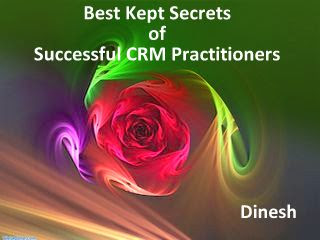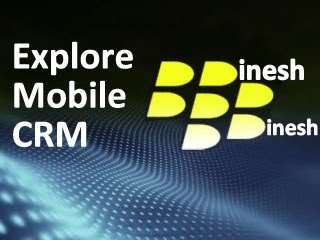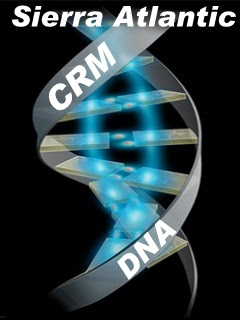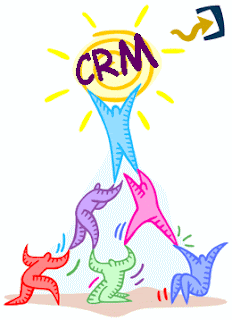 Successful users of customer relationship management have long known the secrets of CRM, and those enterprises that don't will often fail. All organizations can benefit from the best practices that form the foundation of CRM.
Successful users of customer relationship management have long known the secrets of CRM, and those enterprises that don't will often fail. All organizations can benefit from the best practices that form the foundation of CRM.Customer relationship management (CRM) was never meant to be an arcane discipline. However, in many cases, this has been the case. Many clients look at successful CRM practitioners, including the winners of CRM Excellence awards in variety of forums, and think they must have some secret to their success — a secret that's difficult to discover. This is not the case. What appear to be secrets are really best practices — things that enterprises have learned (in some cases, the hard way), and you can emulate and incorporate as well. The only thing secretive about them is that many successful enterprises don't want to trumpet them to their competitors. Let’s look at top 10 secrets
Secret No. 1: CRM is ongoing.
Enterprises that understand CRM well realize that it's not a "once and done" strategy. They never think in terms of a stand-alone CRM project. Instead, they see it as an ongoing re-examination of customer needs, processes and internal dynamics. Enterprises that want to be successful in CRM look at it as a journey that never really ends, and as one that will continue to yield valuable insights and customer benefits via iterative processes. You should realize that customer needs are dynamic, never static. What was satisfactory a year ago may be woefully inadequate today.
Action Item No. 1: View CRM as a process that rolls out over time, and embraces its iterative nature.
Secret No. 2: CRM yields competitive advantage, not parity.
Many enterprises believe that everyone has "done" CRM; therefore, the only value is in matching them. They admit that they may be at a competitive disadvantage if they ignore their customers, but they are not really looking to gain an edge. This is wrong on several counts: 1) Only about 50 percent of enterprises have undertaken CRM initiatives. In some industries, it's even lower. 2) This argument assumes that CRM is about automating functions. If that were the case, they'd be correct, but it's hard for enterprises to gain an edge when everyone has automated the same basic business functions (think of expense reimbursement or human resources). However, CRM is different because it's a strategy based on the needs of your customers. These needs are different for every enterprise and, probably, across different segments. So the key to success is understanding what your customers are saying and meeting those needs accordingly. Understanding this shows that real competitive advantage will come from creating a value-based relationship with your customers.
Action Item No. 2: Use CRM to gain an edge in the market. Don't just copy others — understand what's unique about your enterprise and your customers.
Secret No. 3: Think about processes, rather than functional automation.
Process automation is "the buzz" in CRM right now, but few enterprise really understand it or practice it accordingly. Successful CRM revolves around the analysis and redesign of customer-facing processes that provide real value to the customer. When enterprises talk about automating functions (for example, marketing, sales or service), they're emphasizing the wrong thing, unless they carry it to the next step and start to identify the processes within the function. Truly successful CRM emphasizes these processes, redesigns them and automates them, even when they cut across functions, and even when they cut across the back office.
Action Item No. 3: Don't just automate functions — concentrate on processes. Model, analyze and redesign them from the customer's perspective, even when they stretch across political divisions in the enterprise.
Secret No. 4: CRM is about the long term, not the transactional.
An interesting misconception, which is often perpetuated by vendors, equates CRM with transactional systems, whereas other areas (such as analytics, planning and process) are viewed as outside CRM and part of some other acronym. This causes many enterprises to think of CRM exclusively as a solution for Short-term interactions — that is, basic transactions. At successful enterprises, CRM is viewed as a long-term relationship, across the customer life cycle and across all channels. You need to begin to think in terms of your enterprise, rather than individual departments, having a relationship with the customer. Discussions of who "owns" the customer will disappear, because such a concept has no place in this way of thinking. Strategies should be designed to optimize segments across time, products, channels and multiple interactions.
Action Item No. 4: Although making interactions more efficient is important, don't forget long-term efficiency in sales, marketing and customer service when you're designing your CRM strategy.
Secret No. 5: There are real economic benefits to CRM.
Return on investment (ROI) in CRM has been elusive for many enterprises. It been frequently asked for simple ROI rules of thumb. The problem has been that many enterprises do not track, or they track badly, the sorts of returns they've attained with their CRM initiatives. And those that do it well often don't want to share this information, because they feel it's highly confidential and not something to share with competitors. But we see this as enterprises achieve real economic benefits from CRM. Payback periods of less than a year are not unusual, and, in many cases, ROIs are higher than any other IT-based initiatives enterprises are pursuing. In fact, several enterprises have indicated privately that their CRM initiatives were generating more benefit than their enterprise resource planning (ERP) projects and that, had they known that, they would have started CRM even sooner.
Action Item No. 5: Put good measurement and tracking in place to quantify the real value of CRM, and you'll see tangible numbers.
Secret No. 6: CRM failure rates are improving and are irrelevant anyway.
Several years ago, more than 50 percent of all CRM projects were viewed as failures. This has now become an excuse for enterprises to avoid meeting their customers' needs. Now that many practitioners understand why CRM fails and how to avoid it, failure rates are declining. The research on the subject should be used as insurance, not as an excuse to avoid CRM. Doing so is similar to saying you won't drive a car because some people have had accidents. Its better is to know how to drive safely and not worry about what other people do. Beyond that, in many cases, the failure rates should not be a factor anyway, because customers are demanding that the enterprises they deal with become more customer-centric, so CRM is a necessity, not a luxury. Failure rates will continue to decline as more enterprises
begin to listen to their customers and invest accordingly.
Action Item No. 6: Don't use failure rates as an excuse. Figure out what can be learned from them, and then "blaze your own trail."
Secret No. 7: CRM is far from mature or out of date.
Because CRM has been around for a while, many enterprises seem to think that it is mature, at best, and out of date, at worse. They often ask what the next hot acronym will be. However, CRM is still maturing, and it has a long way to go. Many enterprises are just embarking on their first, contained CRM projects, and customer processes have a long way to go to before they're fully optimized. Successful enterprises see CRM as "young and vibrant," with lots of opportunities for positive change, and wide open spaces for improvement and economic value. As the world's economy begins to rebound, CRM will present you with an opportunity to position yourself to reap the benefits of increased business and consumer spending. On Gartner's Hype Cycle, we see CRM moving up the Slope of Enlightenment, and achieving value in the pantheon of IT enabled strategies. In many ways, the best days of CRM are still
ahead.
Action Item No. 7: Do not reduce CRM to a formula. Embrace it as an iterative process that will be unique to your enterprise and it will grow as you learn to listen to your customers more effectively.
Secret No. 8: Not doing CRM is more expensive than doing it.
Successful CRM practitioners are always surprised — and secretly pleased — when they hear rivals talking about how expensive CRM can be. However, CRM is less costly than the alternative: losing customers to poor service, overspending on lackluster segments, not having enough insight to make intelligent marketing decisions and running the business on only operational and financial data, rather than with customer data. Successful CRM-oriented enterprises view their implementations as wise investments that pay for themselves economically, as well as in customer satisfaction, better decision making and a more-balanced view of running the business. Many enterprises that initially resisted CRM have become some of the biggest supporters, once they realized how inefficient they'd been before.
Action Item No. 8: Allow CRM to become the third piece of a balanced view of your business. Enable the voice of the customer to enter into decision making with operational and financial concerns.
Secret No. 9: Even if you are doing fine right now, you need to do CRM.
The key business strategy of the 2010 to 2020 will be CRM. That means that many enterprises that did well in the past, based on product or brand, are not positioned to move forward as the world becomes customer-centric. Rather than resting on the laurels of past accomplishments, successful enterprises are
using CRM as a foundation from which to remake themselves into customer-oriented businesses. This is not to say that you should abandon what got you where you are today, but rather that you need to adapt it to the new world of the 21st century.
Action Item No. 9: Build on your past successes, using CRM as a base to build a customer-centric philosophy.
Secret No. 10: CRM is change management, not just technology.
Technology is important to CRM — it is one of what Gartner calls its "Eight Building Blocks" — however, the real benefit of CRM is in the positive change it brings to an enterprise. Internal silos break down, better and timelier information become available, customers are better served, and processes are
Streamlined, and effectiveness and efficiency increase. As the enterprise develops a common mission based on the customer, employees become more engaged, take ownership of business processes, and your customers begin to notice and start to feel better about dealing with you. The result is one of the rarest phenomena in business — the win/win situation. Your enterprise makes more money, and customers are happier to do business with you.
Action Item No. 10: Plan for change from the beginning, and embrace it when it happens.
Match Point:
The real secret to customer relationship management is that it is different for every enterprise, but that doesn't mean that you can't learn from the knowledge of others. Successful enterprises will aggressively apply these 10 secrets of CRM to transform their businesses and, in the process, set themselves up for greater success in the years ahead.
Your Partner and Companion
DC*

















